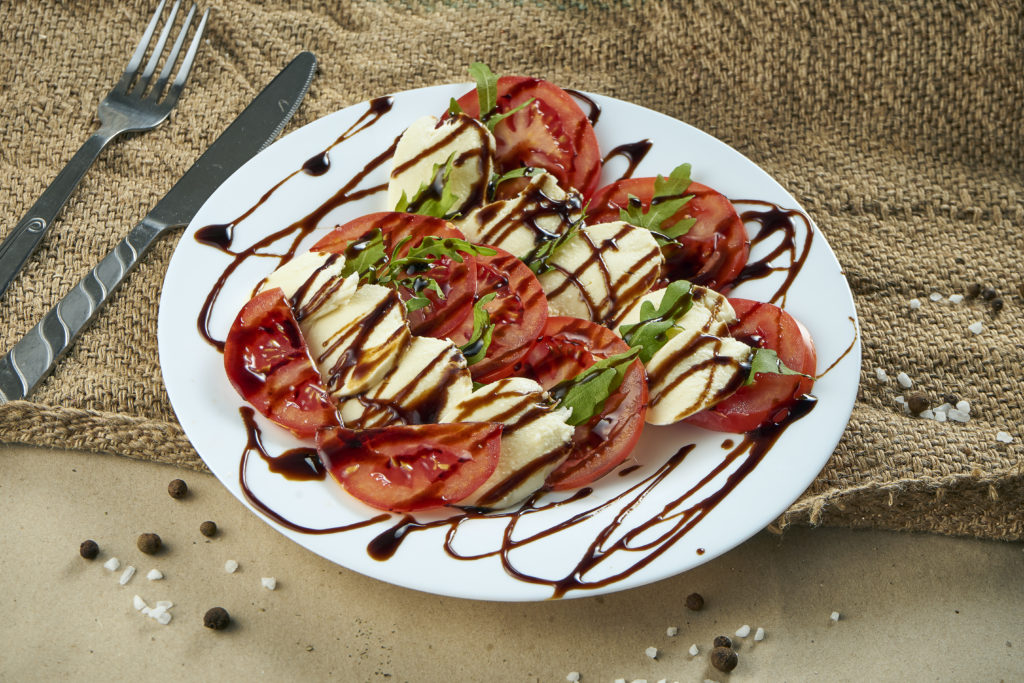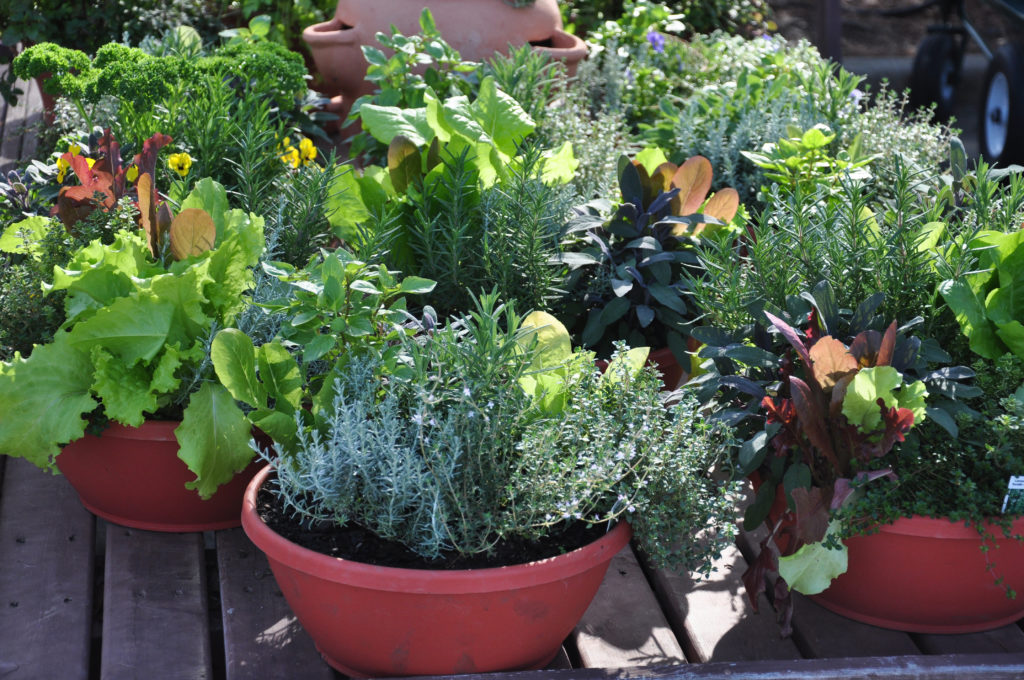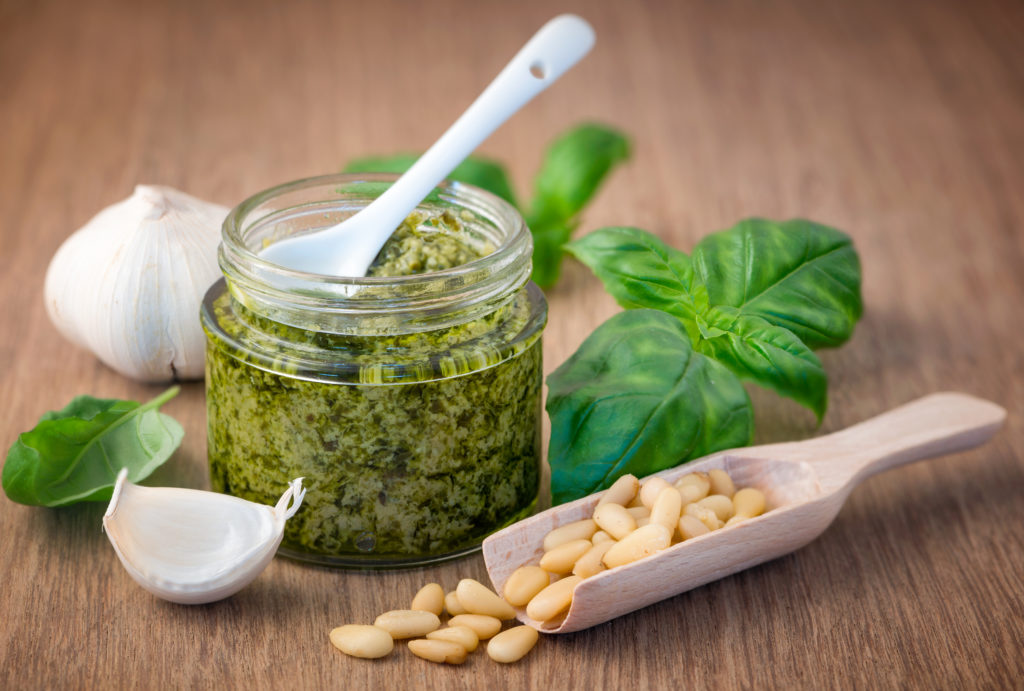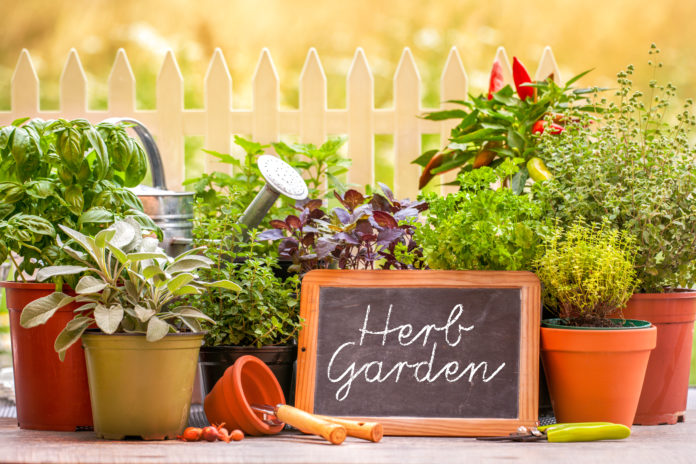…and a recipe using fresh basil from April Boeke with Culinary Innovations
No, we’re not going to Scarborough Fair, but if you ARE ready to start an herb garden, we’ve got you covered here. Whether vegetable, flower or herb (or any combination thereof), there are plenty of reasons to start a garden in general. One of the most important reasons is that gardening eases stress, and who couldn’t use a little anxiety relief these days. And if you have small children in your household, imagine their joy as they see the seeds they plant turn into something beautiful, fragrant, and maybe even yummy!
Whether you like a little fresh basil in your spaghetti sauce or some cilantro in your rice, herb gardens are just beautiful to look at and they smell fantastic! Some of the easiest herbs to grow include sage, basil, parsley, cilantro, oregano, thyme, mint, dill, and chives, and many of them are perennials which means they will even come back next year. Decide now which of these you would like to plant this growing season and start your seeds now.
- Sage (Perennial, plant ⅛ inch deep in well-drained soil, needs full sunlight)
You’ve probably enjoyed the traditional dressing or stuffing for Thanksgiving or Christmas. If so, chances are you have tasted sage. And if you are a “spiritual” person, you may have “cleansed” a new home by “smudging” with a sage bundle. As an added bonus, with proper care, sage can come back next year! But in addition to these uses, sage also offers health benefits. Loaded with nutrients and antioxidants, this aromatic herb can help with memory and can also possibly reduce blood sugar levels and lower LDL cholesterol levels. However, before turning to sage (or any other herb) for medicinal purposes, please be sure to check with your doctor.
- Basil (Annual, plant ½ inch deep in rich and moist soil; needs full sunlight)
This herb is commonly used in Italian cooking and is the main ingredient in pesto (see recipe below). You can preserve fresh leaves in oil or in the freezer for year-round enjoyment. Chop fresh basil for a salad, puree it into soups, add it to cooked pasta, top off a pizza, or make a fresh plate of Mozzarella Caprese with freshly sliced mozzarella cheese, sliced Roma tomatoes, freshly chopped basil leaves, and drizzle with a balsamic vinaigrette. That dish there is almost too pretty to eat, but you don’t make it to look at it, right?

- Parsley (Biennial, plant ⅜ inch deep in rich soil, needs partial sunlight)
You might think of parsley as that piece of greenery in restaurants. It’s interesting to note that the custom of placing a sprig on plates began in France where a chef inspected every order that left his kitchen, and that little sprig of parsley meant it had his approval. But the kind of parsley that we love in meatballs, meatloaf, and soups is the more edible Italian parsley (flat-leafed). This variety offers many culinary uses and is rich in vitamin K, C & other antioxidants. Try parsley in…well…just about everything. But don’t chop it too finely. The larger pieces are prettier and offer more flavor.
- Cilantro (Annual, plant ⅜ inch deep in light soil, needs partial sunlight)
Not to be confused with flat-leafed parsley (they’re usually next to each other in the grocery store), cilantro is often used in salsas and guacamoles. Your spice cabinet may already include the dried version of cilantro which is coriander.
- Oregano (Perennial, plant ¼ inch deep in any kind of soil, needs full sunlight)
Oregano is great in tomato-based recipes. You’ve probably tasted it in pizza sauce and pasta sauce. Infused in oil, oregano can also provide health benefits as a powerful antioxidant and natural antibiotic. Just remember that a little goes a long way.
- Thyme (Perennial, plant ¼ inch deep in fertile soil, needs partial sunlight)
Thyme is wonderful when added to soups, stews, and braised or roasted meats. Thyme is also packed with disease-fighting nutrients and antioxidants. Adding dried time to a hot cup of brewed tea can ease the pain of muscle cramping.
- Mint (Perennial, plant ⅛” deep in rich and moist soil, needs partial sunlight)
Mint butter, mint pesto, mint syrup, mint tea…there are so many ways to use this refreshing perennial. Grab a leaf and chew on it for fresh breath, use it as an insect repellent (ants in particular hate it), and add it to your beverages. Just be careful where you plant it, though; it likes to send runners everwhere looking for new spots to grow.
- Dill (Annual, plant ⅜” inch deep in rich soil, needs full sunlight)
If pickling is your thing, then here’s the “dill!” This plant grows tall, so make sure you place it in a spot where it won’t block sunlight from other plants. Make your own pickles using cucumbers, water, vinegar and dill. Dill is a great complement to potato dishes, rice dishes, soups, stews, and seafood.
- Chives (Perennial, plant ⅜” deep in rich and moist soil, needs full sunlight)
Like the taste of onion but don’t want to overwhelm your dish? Chives are a much milder member of the onion family. Use it on fish, deviled eggs, add to butter or cream cheese, or make dill ice cubes that are perfect for bloody marys or martinis. Another great pest repellent, plant chives next to plants and vegetables that aphids like to feed on; they hate chives. A concoction of boiled chopped chives and water sprayed on plants will protect them from mildew.

Herbs can be planted in pots and set in a kitchen window or you can use larger pots and plant several herbs together and place the pot outside. Harvest your herbs before they flower by only taking one-third of the plant each time. Once your plants begin to flower, that means their life cycle is about to end, and keeping them from flowering will foster continued growth.
Most herbs normally freeze well. Just chop and place them in an ice cube tray with some water and freeze. The next time your recipe calls for fresh herbs, check your freezer.
Basil Pesto

And now, if you find that you have basil growing out of control because you’ve done so well keeping it warm, watered and happy, here’s a recipe for some basil pesto from April Boeke with Culinary Innovations.
- 3 cups fresh basil leaves, slightly packed
- 1/3 cup grated parmesan cheese (freshly grated is best)
- 2 tsp. (2 cloves) minced garlic
- 1 tsp. lemon zest
- 1/4 cup toasted pine nuts
- 2 tsps. lemon juice
- 1/2 cup olive oil
- pinch of red pepper flakes (OPTIONAL)
Add the basil leaves, parmesan cheese, minced garlic, lemon zest, pine nuts, lemon juice and red pepper flakes (if using) to a blender or food processor. Blend continuously until the ingredients start to break down. If you prefer a more coarse pesto, use the pulse setting. Stream in the olive oil and allow the ingredients to emulsify with the oil. You will want to continue processing until the oil is combined with the basil and other ingredients. Taste the pesto and add additional garlic or parmesan to your preference.
STORING: Store the pesto in a small container. Make sure the container can be pressed to reduce air pockets. Homemade pesto can be stored in the refrigerator for up to 1 week. You can also pour the pesto into ice cube trays and freeze. Once frozen, transfer the cubes to a zip-top bag.
If you’re in the need for a corporate event, private gathering or just weekly meals at home, be sure to check out Culinary Innovations by April Boeke at 2308 W. Franklin Street. April is a caterer, personal chef and cooking instructor.
For all of the latest information on our local real estate market in Southwestern Indiana, you can always trust the professionals at F.C. Tucker Emge. Our agents have superior training and resources at their disposal so they can better educate you about the road to homeownership. Even if you are 6-12 months (or more!) out from making a change, there is a lot to learn about the home buying process, and our agents can help you learn what you need to know so that you can be confident in your decision and have a smooth experience when the time comes. Let’s Talk!




